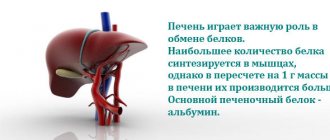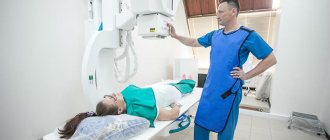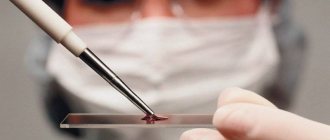The thyroid gland is one of the organs of the endocrine system. It is located in the area of the cartilage of the same name under the larynx. It synthesizes a number of important iodine-containing hormones (T3 and T4), as well as calcitonin, which regulates calcium metabolism in the body. It has mainly 3 lobes:
- right,
- left,
- isthmus.
This organ should not be underestimated, as it performs a number of vital functions. These include:
- maintaining and regulating basal metabolism. All metabolic reactions within the body are controlled,
- ensuring stable temperature,
- preventing bone fragility by inhibiting osteoporosis,
- participation in the process of growth and development of the organism and the central nervous system.
There are cases when thyroid pathology develops. It can manifest itself as a whole range of different symptoms. To accurately verify the diagnosis and determine the further method of treatment, it is necessary to take blood tests for specific hormones.
When and who needs diagnosis of thyroid diseases
The thyroid is a small gland that produces a huge amount of hormones. It is located on the neck in front of the trachea, consists of 2 halves and a septum. Normally, the thyroid gland is not felt. Problems with it more often appear in women after menopause and in adolescents. It’s worth taking a closer look at the thyroid gland if the following disorders appear:
- Chronic fatigue, even after long sleep.
- Sudden weight fluctuations – weight loss or gain for no reason.
- Apathy, depression, nervousness, anxiety.
- Feeling cold even at comfortable temperatures.
- Menstruation problems, infertility. If the functions of the thyroid gland are impaired, girls will lose their periods, and men will suffer from a lack of erection.
- Negative changes in appearance - dryness, flaking of the skin, baldness of the head, hair growth where there was none before, bulging eyes.
Features of the medical procedure
The analysis is taken from a vein. To get a reliable result, you should not eat or drink 12 hours before the test. The best time is morning (before 10 o'clock).
The arm is tied with a tourniquet. The area is treated with an antiseptic, and a needle is inserted into the vein to draw the required amount of blood. The number of days required for decryption is determined by each clinic individually. Basically one day is enough.
After blood is drawn, a bruise may appear at the puncture site. Strong pressure after the injection for several seconds will help reduce the risk of its occurrence. Swelling may occur. Then heat compresses are applied.
If there are problems with blood circulation, then you may experience continuous bleeding. You should first warn your doctor about this violation.
In addition to the analysis, the doctor may need other examination results:
- Ultrasound of the thyroid gland, heart;
- ECG;
- General blood analysis;
- Gland biopsy, scan.
How to check your thyroid at home
If you suspect a disease, it is advisable to go to the hospital to see an endocrinologist and undergo a gland examination. But few people want to spend time on a medical examination without knowing for sure whether there are problems. The best option is to check your thyroid gland at home using simple tests.
Inspection, palpation and determination of organ size
Examining the thyroid gland yourself is quite simple. The procedure will help determine whether the size and structure of the gland are normal. To do this, you need to take water into your mouth in front of a large mirror, take a sip and look carefully at your neck. Normally, there should be no bulges on one side, redness, or bumps. The Adam's apple should move smoothly, without sudden jumps. You can also feel the thyroid gland: it should be moderately dense, mobile, painless.
There should be no asymmetrical bumps. If they are palpable, then these are nodes that can be either benign or malignant. The presence of nodules in the thyroid gland is a reason to urgently go to the hospital.
A regular iodine solution will help determine iodine deficiency. They need to draw a mesh on their wrist. If the pattern disappears completely within a couple of hours, it means there is not enough iodine.
The second version of the test: draw 3 stripes on the inner surface of the shoulder overnight - 1 mm, 3 mm, 1 cm thick. If in the morning there are 2 stripes left (the thin one will disappear), then everything is fine. If the thick line just doesn't go away, it's a cause for concern, but nothing serious. And if all the lines disappear, you need to urgently see an endocrinologist.
Eyebrows can tell you a lot about the state of your thyroid gland. If everything is not in order with the thyroid gland, they thin out and shorten at the outer edge. You can measure their length using a pen. It should be placed vertically against the outer corner of the eye. If the tip of the eyebrow extends beyond the handle, then everything is fine. If not, the organ cannot cope with its functions.
Specific symptoms
To check your thyroid yourself without doctors, you should also look for signs of disease. In a person with a diseased thyroid gland, the lower part of the neck is swollen, there may be redness and itching of the skin in the center, the voice becomes hoarse, intellectual performance and concentration deteriorate. An increase in nearby lymph nodes indicates a malignant or inflammatory process in the organ.
Signs of iodine deficiency:
- dryness of the epidermis and mucous membranes;
- weight gain;
- constant diarrhea or constipation;
- arrhythmia;
- menstrual irregularities;
- low blood pressure;
- impotence.
With thyrotoxicosis, the eyes bulge, a decrease in body weight occurs, regardless of appetite, hair falls out, and a “surprised mask” forms on the face.
With hypothyroidism, the body temperature is always slightly lower than normal, and with hyperthyroidism it is higher.
What to do if thyroid pathology is detected
If, after visiting an endocrinologist, serious diseases are discovered, you should immediately begin treatment. Temporary hormone therapy is often sufficient, but sometimes the problematic thyroid gland must be partially or completely removed. After such an operation, a person needs to take hormones for life.
To protect yourself from thyroid diseases, you need to lead an active, healthy lifestyle, eat foods with iodine, and drink clean, high-quality water. The symptoms of thyroid dysfunction should not be ignored. At least once a year you should contact an endocrinologist for a preventive examination.
How to check the thyroid gland in the hospital
If problems are discovered during home self-diagnosis, you should visit an endocrinologist in the near future to confirm or refute the diagnosis and select adequate treatment. The doctor will tell you how to determine thyroid disease using laboratory tests and hardware examinations. But first he will conduct an inspection.
Medical examination
The procedure is not much different from a home inspection. The doctor will ask you to swallow and will examine and feel the neck area. He will then examine the skin on your elbows, since this is where it dries out most quickly, and will ask you to show your tongue, which may be swollen or coated. This way the endocrinologist will understand which laboratory tests to prescribe.
Thyroid test panel
In the question of how to check the functioning of the thyroid gland, different types of tests will help. One or all of the following is prescribed:
- TSH content - shows the level of the main hormone that affects the functioning of the thyroid gland.
- For thyroxine (T4), a high reading may indicate hyperthyroidism, and a low reading may indicate hypothyroidism.
- For triiodothyronine (T3) - prescribed if the previous hormone is normal, but the doctor suspects that the gland is too active. Sometimes, with adequate thyroxine levels, an excessive level of T3 is detected.
- Antibodies - they begin to be synthesized when the immune system damages the thyroid gland, perceiving it as a foreign object. Using this study, autoimmune pathologies can be detected.
The doctor may also prescribe additional tests for thyroglobulin and calcitonin levels. These studies are carried out only when thyroid cancer is suspected, as well as to control patients who have previously undergone therapy for thyroid cancer.
Ultrasound
Ultrasound examination is the most accessible and accurate hardware diagnostic method, allowing the doctor to see the size, shape, and structure of the thyroid gland. An ultrasound diagnostician knows exactly how to identify thyroid disease. If there are pathologies, ultrasound will show an increase or decrease in the gland, as well as nodes and cysts.
Scintigraphy, MRI and CT
Scintigraphy allows you to check the functionality of thyroid tissue. A radiological examination is carried out as follows: the day before the patient needs to drink a capsule with a contrast agent (radioisotope). The device is then used to examine the distribution of the substance consumed throughout the thyroid gland.
MRI provides a full-fledged three-dimensional image of the organ. In terms of information content, this diagnostic method is comparable to ultrasound. It is usually prescribed for retrosternal goiter in men and women.
Computed tomography is a clarifying diagnostic method that combines the advantages of ultrasound and classical x-rays. And with the help of CT, you can perform an ultra-precise biopsy of nodes in the thyroid gland.
Biopsy and auxiliary methods
If nodules or lumps are found in the thyroid gland, a biopsy must be performed to determine the nature of these neoplasms. The procedure allows you to distinguish benign tumors from oncology. If malignancy is confirmed, laryngoscopy is performed before surgery. The doctor inserts a thin tube with a camera into the patient's throat and examines its walls to check how the vocal cords are positioned. This helps prevent them from being injured during surgery on the gland.
You need to know how the thyroid gland is checked in the hospital. Timely, complete diagnosis of the condition of the endocrine organ is very important, because without treatment, its diseases can lead to severe, deadly complications.
What are the dangers of thyroid diseases?
All internal organs and the brain suffer from improper functioning of the thyroid gland. This is especially undesirable for children, since the process of physical and mental development is disrupted. The child may lag behind his peers, and his susceptibility to other diseases increases.
&
Adults with advanced thyroid pathologies may experience thyrotoxic crisis and hypothyroid coma. A crisis sometimes develops after removal of the thyroid gland, as well as due to advanced diffuse goiter. It manifests itself as weakness, a sharp increase in temperature up to 40 degrees, rapid breathing, arrhythmia, and confusion. A person may suddenly develop liver failure, which can lead to death.
Coma is a complication of hypothyroidism and previously was almost always fatal.
It can be triggered by severe stress, infections, severe colds, taking antibiotics, or hypothermia of the neck. The victim's temperature drops sharply, he loses consciousness, and stops responding to stimuli. Subsequently, the temperature continues to decrease, breathing becomes rare, and the brain experiences oxygen starvation. If a comatose person is not taken to intensive care in time, he will die.











